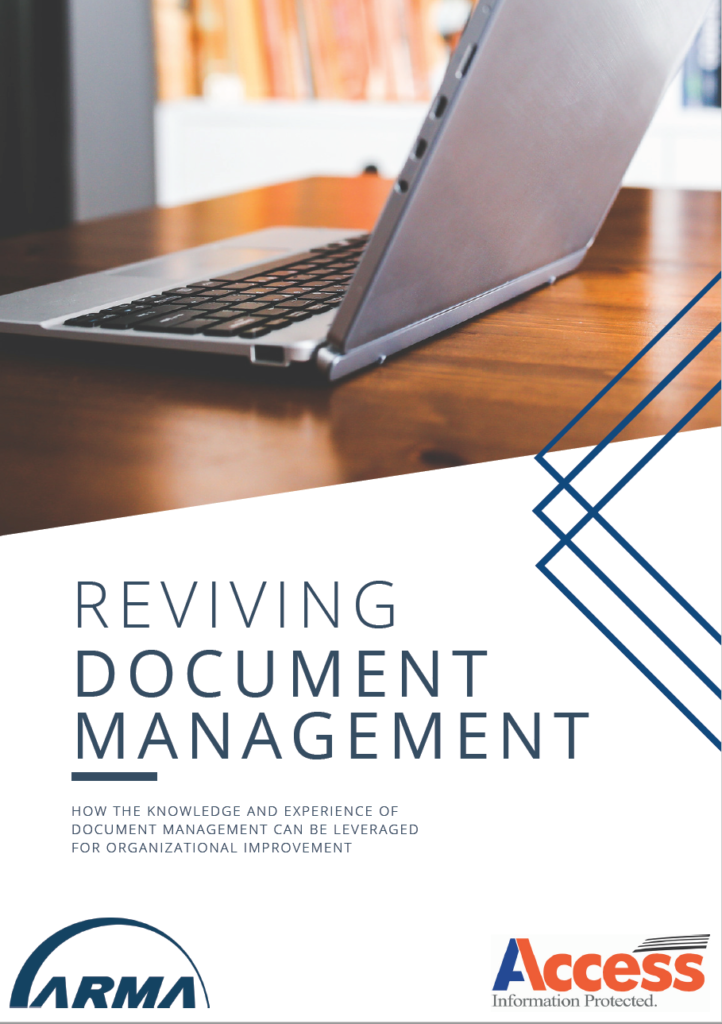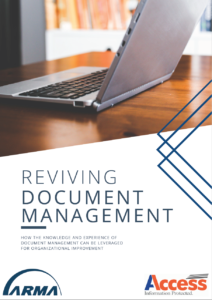Mapping Document Management Processes (Leveraging an Information Lifecycle)

(The following is an excerpt from an ARMA White Paper “Reviving Document Management: How the Knowledge and Experience of Document Management Can be Leveraged for Organizational Improvement“, sponsored by Access.)
Processes around documents must mirror the processes around all organizational information. A consistent lifecycle for all information in an organization must be applied, with room for the unique nuances of document management to assert themselves. For this consistency across systems and classes of information (including documents), one should leverage an information lifecycle model.
All organizational information has both a point of creation and an end-point of disposal (or that information is moved into archives – think of founding documents and historical artifacts of an organization). While the point of creation may be different in document management (a scanning process or integration with another information system through integration), it’s essential to align the lifecycle mapping with other organizational information systems.
ARMA defines an information lifecycle graphically with the following:
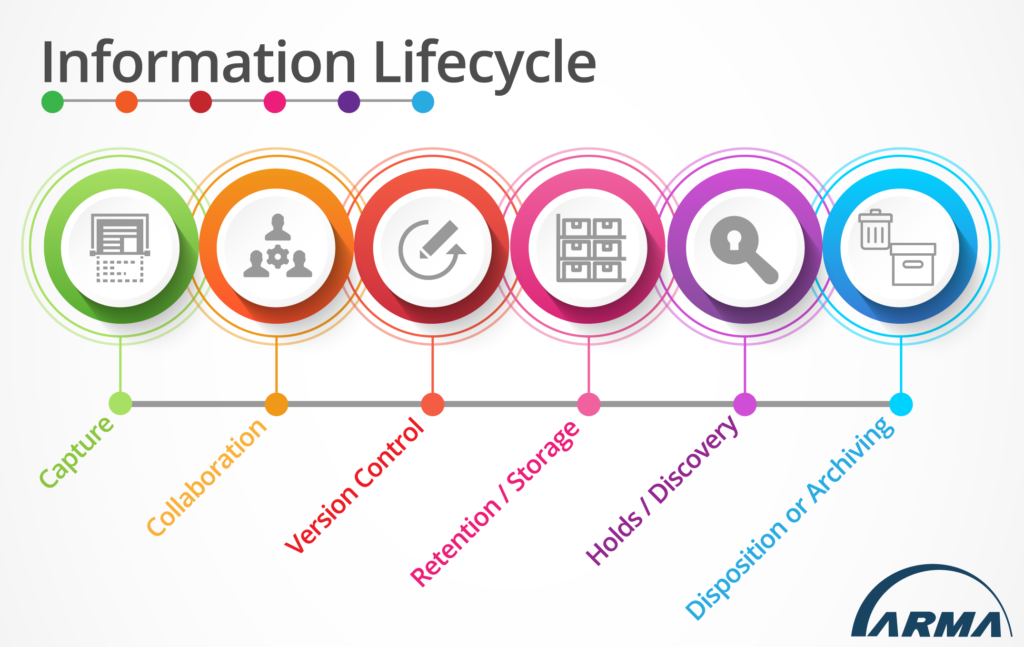
All organizational information, documents or otherwise, must have a creation point (we’ll discuss this in a moment). The information is then usable by the organization through its collaboration phase. When a piece of information is changed or edited, we should be employing version control to ensure the potential restoration of any accidental changes, and we maintain any prior versions required for records purposes. Information, or in this case documents, should be retained or stored for the required lengths of time for external regulations and compliance purposes, but also for the length of time that they remain useful for the organization (whichever is longer). We should, in most organizations, be able to apply holds or eDiscovery processes whenever there is related litigation – holds and processes that ensure that relevant information isn’t deleted or disposed of during the course of any form of litigation. At the end of the lifecycle, the information should be disposed according to pre-defined disposition processes and/or sent to archives.
For document management, the information lifecycle generally starts with scanning or system integration. System integration generally moves the intake of documents closer to their origination and may create documents out of other form-based processes. Scanning (either imaging or digitization) is a type of capture (a broader term that also includes file upload and native file creation).
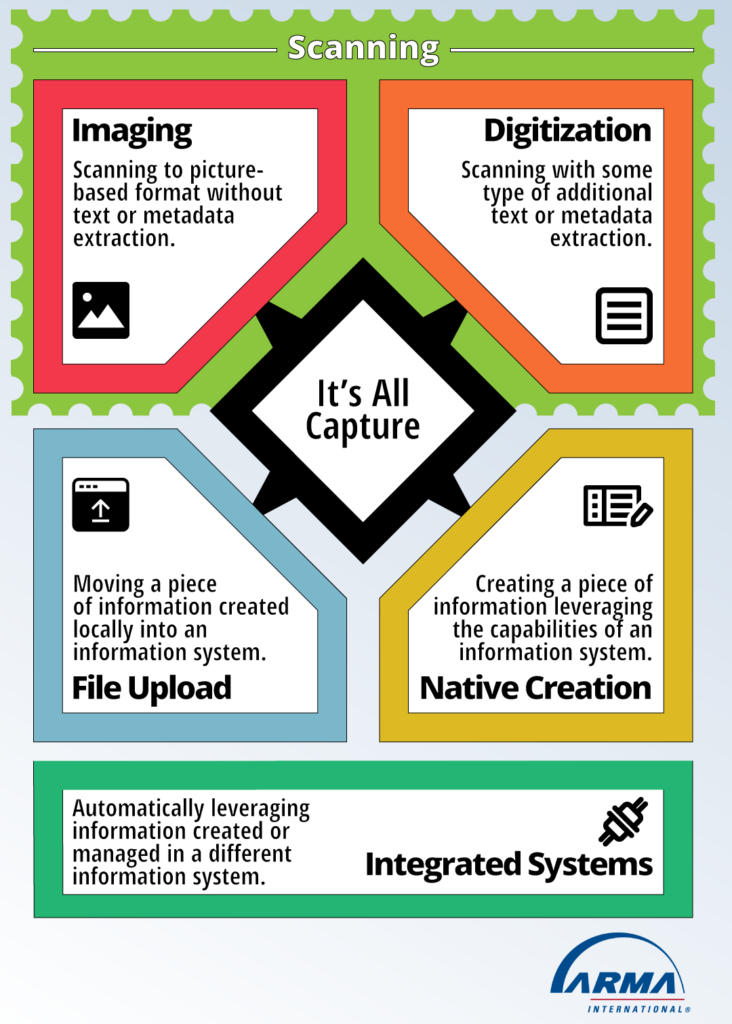
Scanning processes in most organizations have matured from imaging (simple scanning of paper documents into picture-based formats like JPG, PNG, or TIFF) to digitization (scanning of paper documents that includes either metadata extraction or text recognition that converts the paper into a machine-readable format like DOC or PDF). If your organization is still employing basic scanning processes and hasn’t yet matured to digitization processes, this is an area of potentially great benefits without a significant amount of effort.
Further, document management systems’ metadata fields should align with organizational goals for metadata fields in other broader systems, such as ECM systems or IM systems. If an organization isn’t undertaking an information governance-focused approach (more on that later), it is possible for the document management team to proactively leverage other systems’ taxonomies and employ those within the document management system – leveraging a project management methodology for those changes.
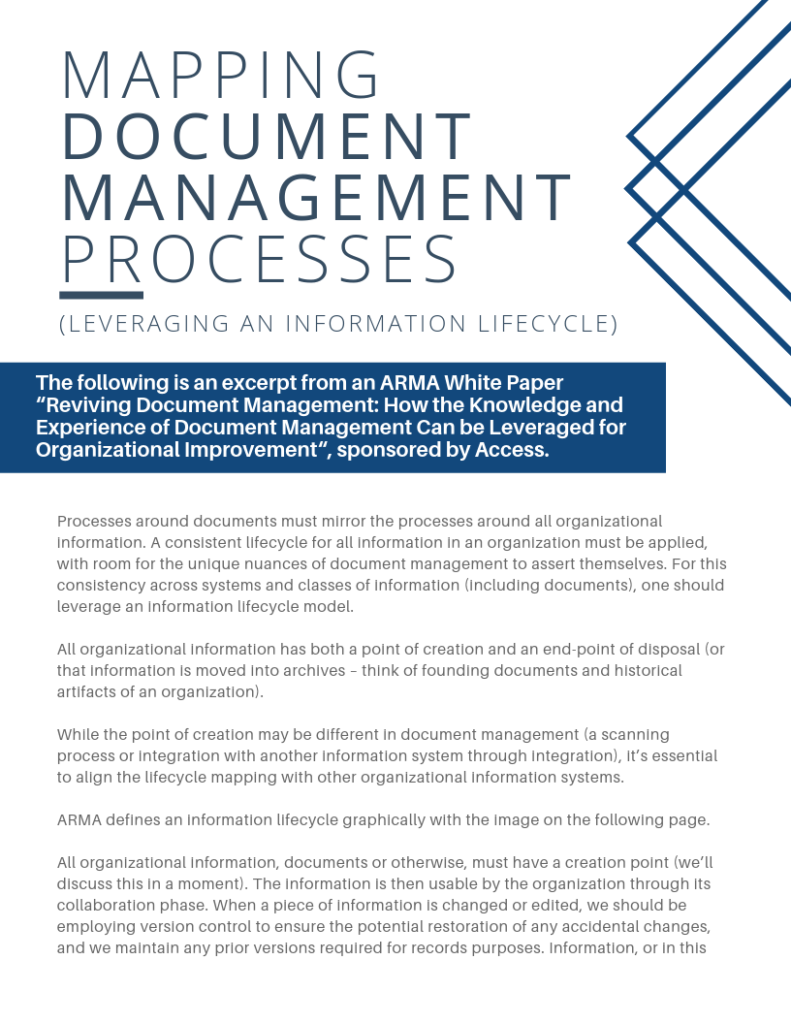
Download the PDF version of this article.
[ls_content_block id=”957″]
[ls_content_block id=”702″]
About the Author
 Information Governance2022.07.18The IGP Exam: New and Improved
Information Governance2022.07.18The IGP Exam: New and Improved Analytics2021.02.01What’s Next in Information Governance? Continuous Audit and Analytics
Analytics2021.02.01What’s Next in Information Governance? Continuous Audit and Analytics Information Governance2020.11.19Information Governance: Alignment with Business is Essential
Information Governance2020.11.19Information Governance: Alignment with Business is Essential Information2020.09.11New Podcast Series Focuses on the Careers of Women Leaders in Information Governance
Information2020.09.11New Podcast Series Focuses on the Careers of Women Leaders in Information Governance
